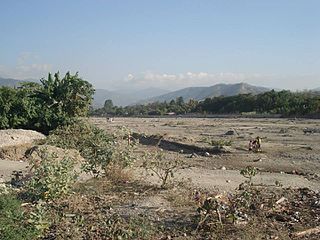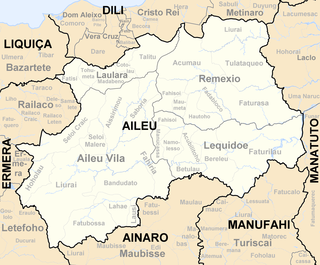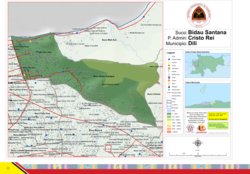
Dili is the capital and largest city of East Timor. It lies on the northern coast of the island of Timor, in a small area of flat land hemmed in by mountains. The climate is tropical, with distinct wet and dry seasons. The city has served as the economic hub and chief port of what is now East Timor since its designation as the capital of Portuguese Timor in 1769. It also serves as the capital of the Dili Municipality, which includes some rural subdivisions in addition to the urban ones that make up the city itself. Dili's growing population is relatively youthful, being mostly of working age. The local language is Tetum; however, residents include many internal migrants from other areas of the country.

East Timor is divided into 14 municipalities, which are former districts. One municipality is also a Special Administrative Region (SAR). The municipalities are divided into administrative posts, and further subdivided into sucos (villages). Atauro Island was initially a part of Dili Municipality, but became a separate municipality on 1 January 2022. The borders between Cova Lima and Ainaro and between Baucau and Viqueque were changed in 2003.

The Sahen River is a river in East Timor. It originates in central Manatuto municipality, flows in a mostly southerly direction, and then discharges into the Timor Sea at the southern tip of the border between Manatuto and Manufahi municipalities.

The Comoro River is a river in East Timor. It flows north into Ombai Strait, reaching the coast in the north western suburbs of the capital, Dili. In its lower reaches, it is the main and largest of Dili's four major rivers.

East Timor is divided into:

Cristo Rei, officially Cristo Rei Administrative Post, is an administrative post in Dili municipality, East Timor. Its seat or administrative centre is Becora, and its population at the 2010 census was 54,936.

Luro, officially Luro Administrative Post, is an administrative post in Lautém municipality, East Timor; Luro is also the name of two of its towns.

Aissirimou is a village and suco in Aileu Subdistrict, Aileu District, East Timor. The administrative area covers an area of 29.81 square kilometres and at the time of the 2010 census it had a population of 2192 people.

Bandudato is a suco of Aileu subdistrict, Aileu District, East Timor. The administrative area covers an area of 30.65 square kilometres and at the time of the 2010 census it had a population of 1,426 people.

Fatubossa is a suco in Aileu subdistrict, Aileu District, East Timor. The administrative area covers an area of 29.31 square kilometres and at the time of the 2010 census it had a population of 1750 people.

Hoholau is a suco in Aileu subdistrict, Aileu District, East Timor. The administrative area covers an area of 16.72 square kilometers and, at the time of the 2010 census, it had a population of 766 people

Saboria is a suco in Aileu subdistrict, Aileu District, East Timor. The administrative area covers an area of 22.14 square kilometres and at the time of the 2010 census it had a population of 713 people.

Fatisi is a suco in Laulara subdistrict, Aileu District, East Timor. The administrative area covers an area of 11.82 square kilometres and at the time of the 2010 census it had a population of 1156 people.

Cacavei is a village (suco) in East Timor. It is located in Lospalos sub-district and Lautem district. This village is in between Lospalos town and Iliomar sub-district.

Fatululic, officially Fatululic Administrative Post, is an administrative post in Cova Lima municipality, East Timor. Its seat or administrative centre is Fatululic.

The Bandeira Waterfall is a tall waterfall in the municipality of Ermera, East Timor. It forms part of a minor tributary of the Loes River.

The Berloi Waterfall is a small waterfall in the municipality of Aileu, East Timor. It forms part of a minor tributary of the Comoro River.

The President B. J. Habibie Bridge is a two-lane road bridge in the suco of Bidau Santana, an inner suburb of Dili, capital city of East Timor. It is named after B. J. Habibie, the President of Indonesia who decided in 1999 to hold that year's referendum on whether East Timor would become independent of Indonesia.

Cape Fatucama is a cape or large headland a short distance north east of Dili, on the north coast of East Timor. It is best known as the site of the Cristo Rei of Dili, a colossal statue of Jesus Christ.
Fatuhada is a Suco ("village") in East Timor under the Administrative Post Dom Aleixo Administrative Post in Dili Municipality, within the capital city Dili.



















